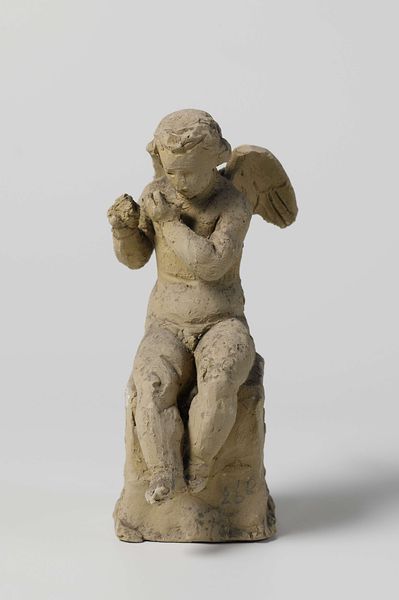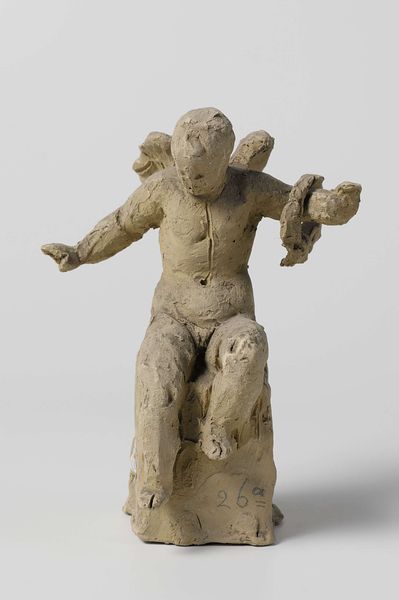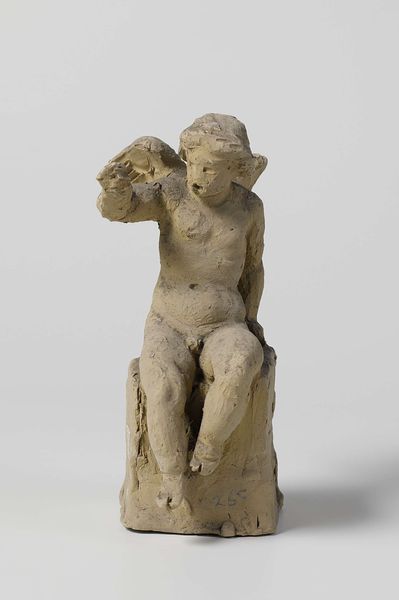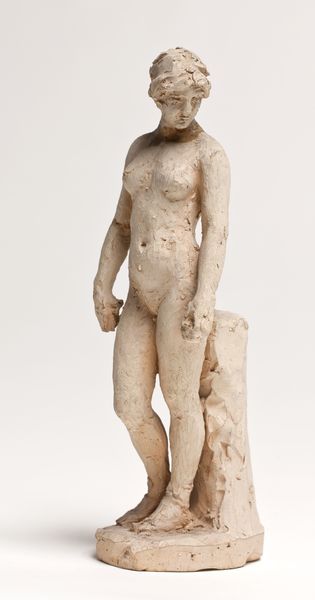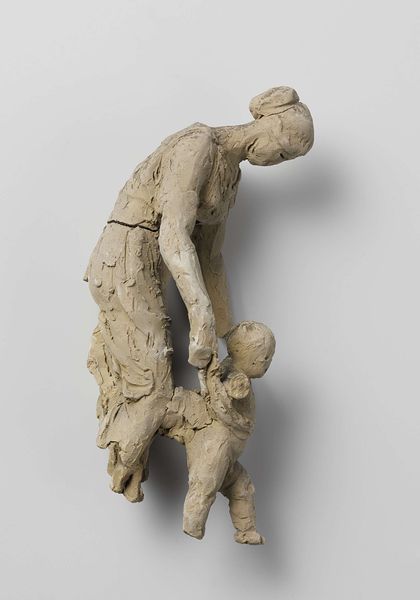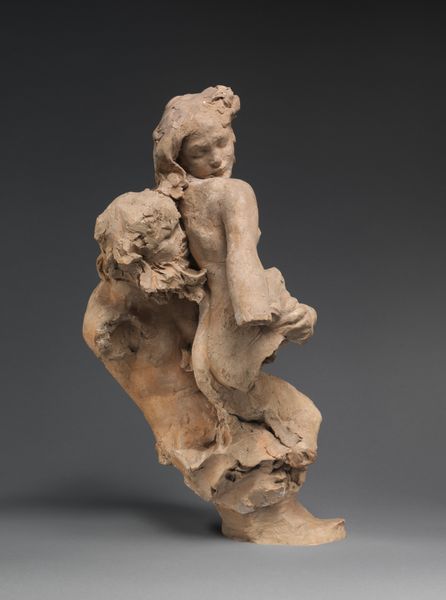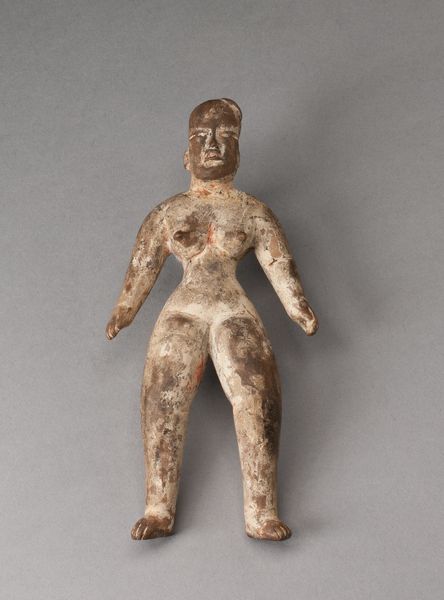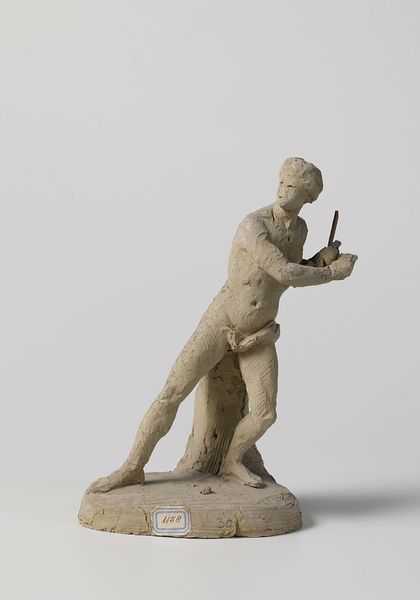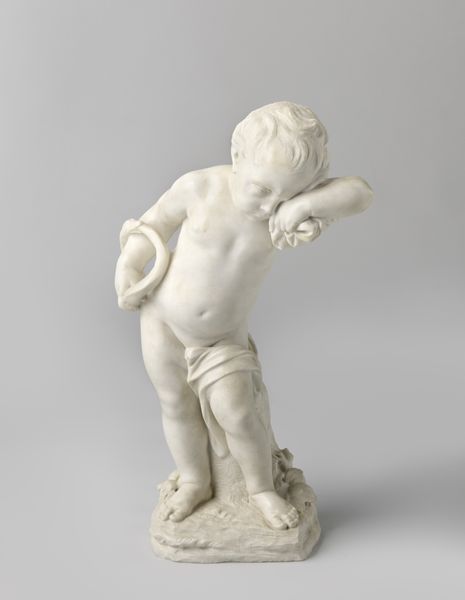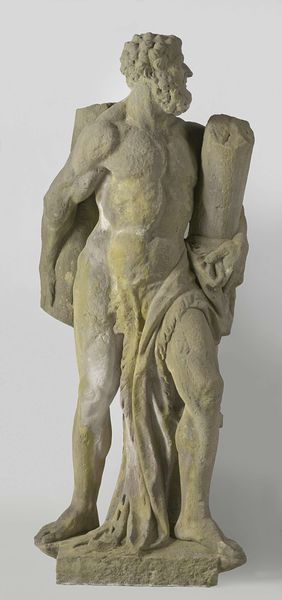
carving, sculpture, plaster
#
portrait
#
carving
#
neoclassicism
#
sculpture
#
figuration
#
sculpture
#
plaster
Dimensions: height 18 cm, width 8.4 cm, depth 12.4 cm
Copyright: Rijks Museum: Open Domain
Editor: This is "Gevleugelde Putto," or "Winged Putto," a plaster sculpture created around 1800-1900, attributed to Eugène Lacomblé. The cherubic figure is oddly unsettling. How do you interpret this work? Curator: Its Neoclassical style and use of the putto motif are indeed telling. Consider the historical context: the turn of the 19th century was a time of revolution and shifting social orders. This idealized cherub, intended to evoke innocence and purity, is rendered in a somewhat crude and vulnerable form. Doesn’t it prompt questions about how ideas of innocence were constructed and potentially corrupted during this period? Editor: I see what you mean. The figure's missing forearm, the rough texture of the plaster – it subverts the perfect image you expect. Curator: Exactly. Think about the power dynamics at play. These putti were often commissioned by wealthy patrons to decorate their homes, reinforcing a sense of their own refined taste and social dominance. Yet, this particular putto feels almost like a critique of that very system, wouldn’t you say? Does the fragility, even the brokenness, suggest a challenge to established hierarchies? Editor: That's a really interesting point. I hadn't considered the socio-economic aspect. So, it's not just about aesthetic beauty, but also about the complex relationships between artist, patron, and societal values? Curator: Precisely. The 'flaws' make us confront the artificiality of these constructed ideals. It invites us to challenge the narratives that elevate some while marginalizing others. Editor: I've definitely learned a lot, considering not just what the artwork is, but what it represents in a broader cultural conversation. Curator: It’s a continuous questioning and unraveling, viewing art as an active agent in shaping our perceptions.
Comments
No comments
Be the first to comment and join the conversation on the ultimate creative platform.
